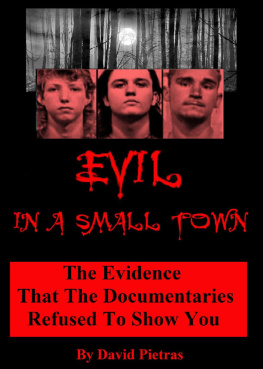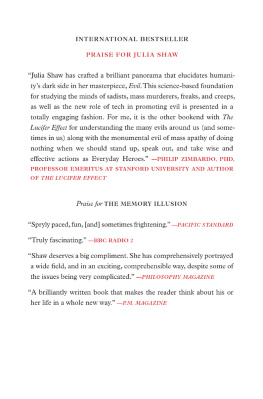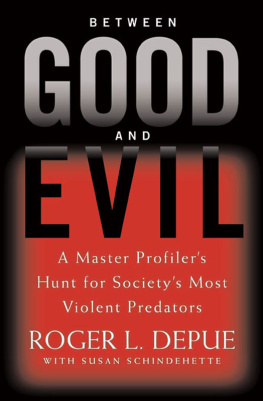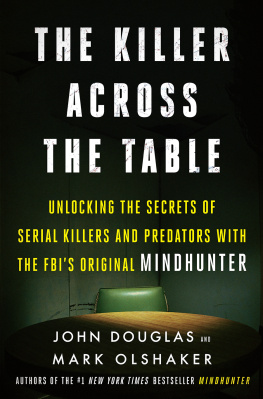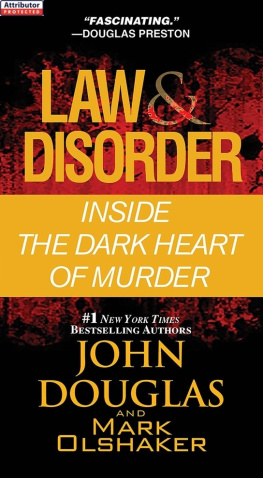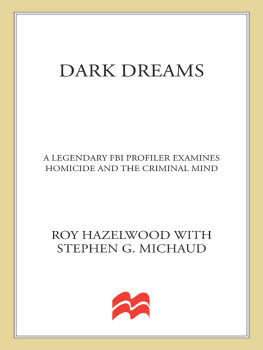FBI DIARY
PROFILES OF EVIL
FBI DIARY
PROFILES OF EVIL
by
PETE KLISMET

FBI DIARY Copyright 2015 by Peter M. Klismet, Jr.
All rights reserved.
No part of this publication may be reproduced, stored in a retrieval system, or transmitted, in any form or by any means without the prior written permission of the publisher, nor be otherwise circulated in any form of binding or cover other than that in which it is published and without a similar condition being imposed on the subsequent purchaser, except in the case of brief quotations embodied in critical articles and reviews.
For information contact DoctorZed Publishing,
10 Vista Ave, Skye 5072 South Australia
www.doctorzed.com
Third Edition
ISBN: 978-0-9943054-9-7 (pbk)
ISBN: 978-0-9943054-8-0 (ebk)
A CiP can be found at the National Library of Australia
Original Cover and Book Design by Blake Whiteside
DEDICATION
T his book could not have been completed without the patience of my family members during the course of thirty years in law enforcement. Its not easy to endure the long hours, trips out of town, and other demands of a career this long. Its taken me many years to understand this, and I am appreciative of what you had to tolerate, particularly my former spouse, Mary Ann, who passed away in February of 2013.
I would also like to dedicate this book to the victims and families of victims whose cases are enumerated within the pages of this work, and to the families and friends of all those who have met their fate at the hand(s) of violent sexual predators. Hopefully, we can get better at identifying these people before they start their killing careers, and in this process to determine better ways to deal with them before they strike. Ill say a few prayers for that to occur someday.
Last but not least, my wife, the amazing Miss Nancy.
ACKNOWLEDGEMENTS
D ave Bundy, Editor of the Lincoln Star Journal, was kind enough to approve the use of their research and incredible articles on the Helen Wilson case. Thank you Dave, Catharine Huddle, and the other top-notch reporters from the Star who did their best to bring an incredible injustice to the attention of the public. The work you did was, and remains, a sterling example of thoroughly-researched investigative reporting.
For Supervisory Special Agents Bob Ressler and Roy Hazelwood, both retired from the Behavioral Sciences Unit at the FBI Academy in Quantico, Virginia, I reserve my very special thanks. Each of you was instrumental in kindling a tire within me that has burned for thirty years. I continue to appreciate your mentorship and friendship. Regrettably, between the first edition of this book being released and the present edition going to the publisher, Bob Ressler has passed away. There are few people around who truly understand and appreciate the contributions Bob made to understanding and fighting violent crime. They cant be measured in words. As you will see from the chapters that involve him inside this book, I had and always will have the greatest respect for Bob. He was a true icon and we will all miss him greatly.
Finally, I would like to recognize the many dedicated officers, deputies, and agents who give so willingly of their time and lives, and whose friendship and professionalism I will always remember. Few understand how hard you work daily for our safety.
CONTENTS
DISCLAIMER
T he views and opinions expressed in this book are those of the author, and do not represent the views and opinions of the FBI. This book is meant to accurately portray the life and times of the people in it; however, some creative license has been taken to keep the flow of the story vital, clear, and intact. Historical personages are mentioned by name; other characters carry fictitious names that may represent a composite of more than one person, or exaggerated traits to emphasize a point. The same holds true for conversations, alleged quotes, classroom lectures, interviews, and interrogations that take place throughout the book. Together, I hope they create an exciting, entertaining, and informative excursion into another dimension of our world. Any errors are mine, alone.
M edieval knowledge of the legendary creature stemmed from biblical accounts and ancient sources. In fable, it was variously described as a wild ass, a goat, or a horse, and sometimes a combination of all three. Most often, the beast was thought to be a horse, but a most unusual one, with a huge spiraling horn projecting from its forehead toward the sky. In some stories, it is described as having a goats beard and cloven hooves. It was said to be a wild woodland creature, a symbol of purity and grace, which could only be captured by a virgin. Its horn was said to have the power to render poisoned water potable, and to heal sickness. Its powers were thought to extend beyond even these miracles. Despite all evidence to the contrary, there was never a confirmed sighting of the animal. Until the nineteenth century, belief in the creature was widespread among historians, writers, poets, physicians, and theologians. While many wished to believe the unicorn roamed freely, no one could prove its existence, and the legend became the stuff of childrens fairy tales.
During my time in the FBI, people would react to my occupation with, Ive never seen one of you, except on television. Or, You cant be an FBI agent. They cant tell anyone what they do. Id get, Ive never met an FBI agent in my life, and even, Ive heard of you, but I didnt really believe you existed. The most common response was, Why in the world do we have FBI agents here? The latter was far and away the most popular, particularly when I was in Iowa and Nebraska. It didnt take long to figure out I was, in fact, a unicorn.
Another question I often fielded was, What is it like to be an FBI agent? And yet another was, What was the most interesting case you ever worked on? The answer to the question, What was it really like to be an FBI agent? was the most difficult to answer. In truth, there was no single, correct answer. Because of the popularity of the television show The FBI, people had a certain image, if not stereotype, of what an FBI agent was supposed to look and act like. Another comment I frequently heard was, You dont look like Efrem Zimbalist, Jr.
Well, no kidding.
While some legends fade away, others are born and prosper.
The infancy of an American legend began over one hundred years ago in Washington, D.C., in an institutional rather than mythological sense. Twelve Secret Service agents were assigned to form what was then called the Bureau of Investigation, or BOI. It took many years for that tiny, insignificant organization to grow into the mammoth agency it is today.
Prostitution was the initial focus of the BOI. Agents were tasked with visiting and making surveys of brothels to enforce provisions of the White Slave Act. With such a limited jurisdiction, the BOI grew slowly. But it did grow, and with the jurisdictional focus on prostitution it was not a surprise that corruption was rampant, even involving the first director, Stanley Finch. Hardly the things of which legends are made.
Finally, it became clear that changes had to be instituted. In 1924, President Calvin Coolidge appointed a young Department of Justice attorney, John Edgar Hoover, as the sixth director of the BOI. When he took over the bureau, it had approximately 650 employees, 441 of which were Special Agents. In 1935, Hoover was instrumental in changing the name of the organization to the Federal Bureau of Investigation. During his forty-eight year reign, which ended with his death in 1972, Hoover built the FBI into a large and efficient crime-fighting agency. Many innovations, including a national crime laboratory and a centralized fingerprint file, began under his watch. Many others would follow. And the legend grew.
Next page


